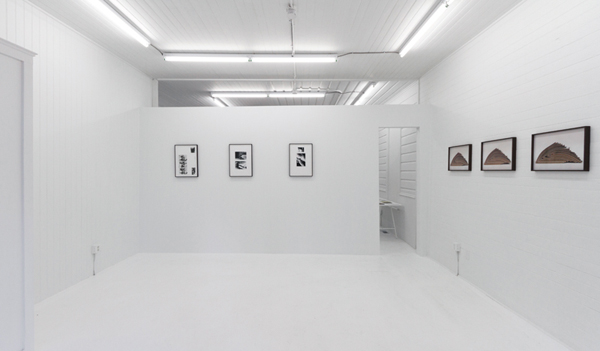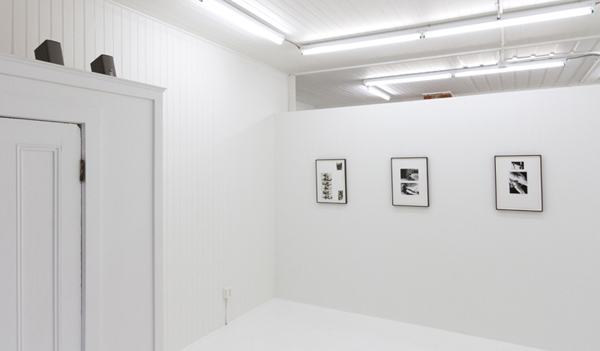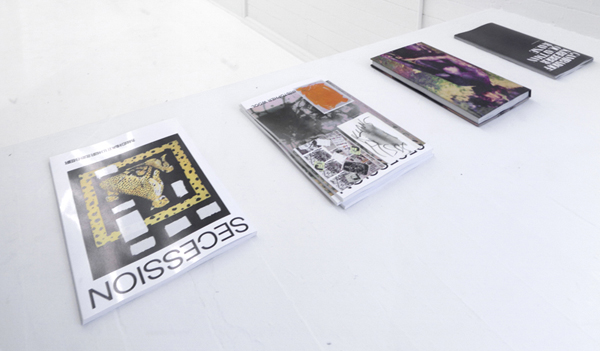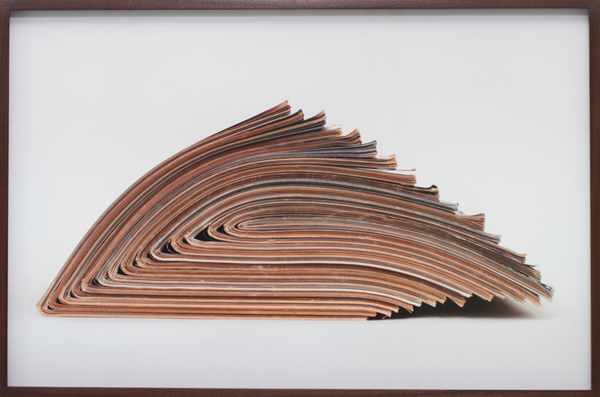







Brian Kennon
Get In (No Man is an Island)
April 20–March 20, 2012
Over the past few years, Brian Kennon has emerged as one of the most active and generous participants in the Los Angeles art scene. Aside from his practice as an artist, which regularly involves collaboration or appropriation of other artists’ work (many of them his friends or mentors), he single-handedly runs 2nd Cannons Publications, an independent publishing house that produces a wide range of artists’ books and editions.1
For Brian Kennon, fandom and the images and ideas that serve as stand-ins find ways to be actively misinterpreted, as if the best method of dispelling the anxiety of influence were to reclaim the territory for oneself. Though difficult to imagine without the history of appropriation art that precedes him (from Sherrie Levine, who makes an appearance on the cover of Kennon’s collaborative book She Has a Hot Ass (2011), to Levine’s old rival Richard Prince), the work of Kennon depends less on appropriation than on misappropriation, which in modern political-speak means ‘theft’.
Kennon’s is a kind of theft that both honours those from whom he’s stealing and still happily misinterprets for his own purposes. This kind of misappropriated fandom demonstrates the same appreciation for things and relics as the real thing, but is filtered through his practice as an artist of making things, often for consumption in art galleries, though regularly in the form of books. This
fetish of the book is doubly realised in works using the pinup spread, the curves of the model’s body mirroring the curves of the book. For Kennon, bodies and forms were never truly separated from minds and ideas. Lately his misappropriations have taken on a kind of metacommentary, mixing images and influences, from invented group shows clustering together into a single print to the totalizing of books about Los Angeles art into a single tableau, the latter work offering a brilliant commentary on collapsed space and totalitarian summations about art. Collapsing the false distance between concept and form, Kennon takes what most appeals to him, and makes it most physically his own.2
Kennon’s practice of laying claim to popular imagery is far more invested in the “fetish” than the notion or action of “appropriation.” Indeed, he will be the first to admit that what interests him most about appropriation art is not the subversion of authorship or stealing from the public domain, but rather the notion of lust. Through both his studio work and his 2nd Cannons books – the two sides of a cohesive art practice-Kennon is able to channel is longheld desires for art, rock and film, inventing ways to participate with an otherwise received popular culture, while prolonging the exposure to and protracting the meaning of fine art. In other words, when he wants to see more of something (be it an image idea, or icon), he simply makes more for himself by recycling, rearranging, accumulating and colliding pre-existing signs.3
1 Jonathan Griffin, "Spread the Word," Mousse Issue 27, February - March 2011.
2 Andrew Berardini, “Future Great 2012: Brian Kennon,” ArtReviewissue 57, March 2012.
3 Catherine Taft, "Love it to Death: Brian Kennon's Lust for Icons" Kaleidoscope, issue 3 Sept-Oct 2009.
Get In (No Man is an Island)
April 20–March 20, 2012
Over the past few years, Brian Kennon has emerged as one of the most active and generous participants in the Los Angeles art scene. Aside from his practice as an artist, which regularly involves collaboration or appropriation of other artists’ work (many of them his friends or mentors), he single-handedly runs 2nd Cannons Publications, an independent publishing house that produces a wide range of artists’ books and editions.1
For Brian Kennon, fandom and the images and ideas that serve as stand-ins find ways to be actively misinterpreted, as if the best method of dispelling the anxiety of influence were to reclaim the territory for oneself. Though difficult to imagine without the history of appropriation art that precedes him (from Sherrie Levine, who makes an appearance on the cover of Kennon’s collaborative book She Has a Hot Ass (2011), to Levine’s old rival Richard Prince), the work of Kennon depends less on appropriation than on misappropriation, which in modern political-speak means ‘theft’.
Kennon’s is a kind of theft that both honours those from whom he’s stealing and still happily misinterprets for his own purposes. This kind of misappropriated fandom demonstrates the same appreciation for things and relics as the real thing, but is filtered through his practice as an artist of making things, often for consumption in art galleries, though regularly in the form of books. This
fetish of the book is doubly realised in works using the pinup spread, the curves of the model’s body mirroring the curves of the book. For Kennon, bodies and forms were never truly separated from minds and ideas. Lately his misappropriations have taken on a kind of metacommentary, mixing images and influences, from invented group shows clustering together into a single print to the totalizing of books about Los Angeles art into a single tableau, the latter work offering a brilliant commentary on collapsed space and totalitarian summations about art. Collapsing the false distance between concept and form, Kennon takes what most appeals to him, and makes it most physically his own.2
Kennon’s practice of laying claim to popular imagery is far more invested in the “fetish” than the notion or action of “appropriation.” Indeed, he will be the first to admit that what interests him most about appropriation art is not the subversion of authorship or stealing from the public domain, but rather the notion of lust. Through both his studio work and his 2nd Cannons books – the two sides of a cohesive art practice-Kennon is able to channel is longheld desires for art, rock and film, inventing ways to participate with an otherwise received popular culture, while prolonging the exposure to and protracting the meaning of fine art. In other words, when he wants to see more of something (be it an image idea, or icon), he simply makes more for himself by recycling, rearranging, accumulating and colliding pre-existing signs.3
1 Jonathan Griffin, "Spread the Word," Mousse Issue 27, February - March 2011.
2 Andrew Berardini, “Future Great 2012: Brian Kennon,” ArtReviewissue 57, March 2012.
3 Catherine Taft, "Love it to Death: Brian Kennon's Lust for Icons" Kaleidoscope, issue 3 Sept-Oct 2009.